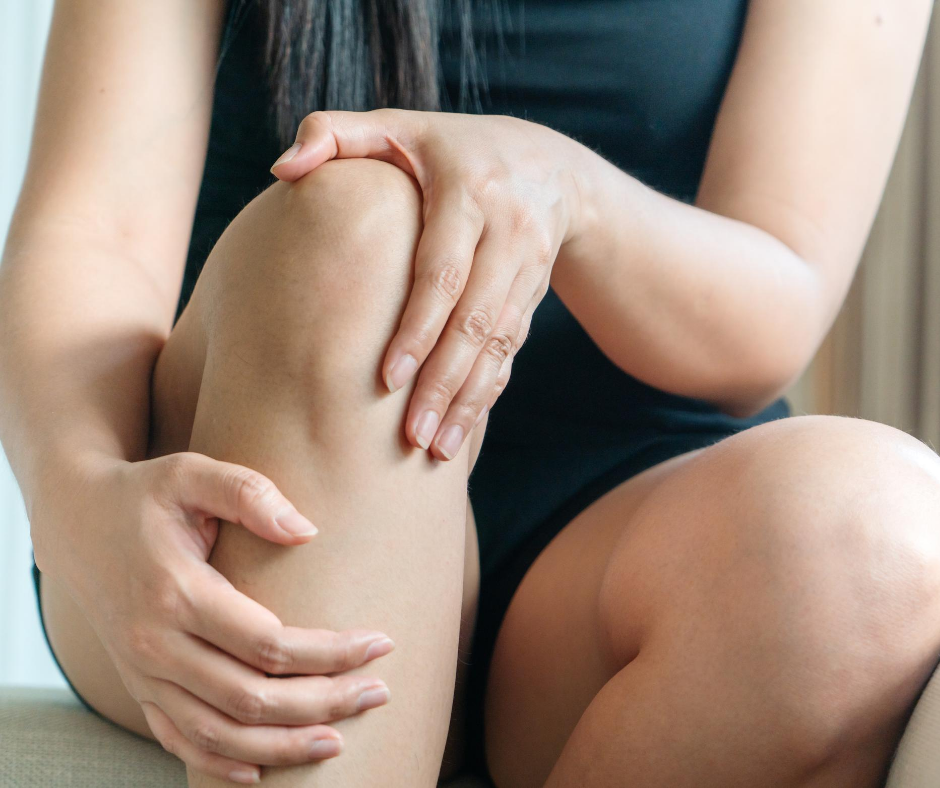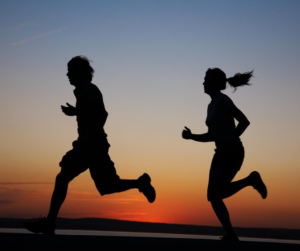
Recently, we shared all about the big range of problems that our podiatry team here at Perform Podiatry can help you with. From in-toeing to foot drop, to managing falls risk and instability on your feet, we’re trained to help you with it all – you can read all about it here.
Today, we thought we’d share with you the different types of patients we see, that aren’t your typical ingrown toenails or corns that need removing. We’re proud to be a diverse clinic with a wide range of offerings in the fields of sports medicine and beyond – so he’s a little insight into how we really spend our days as podiatrists!
1. The post-surgery recoverer
We have fantastic relationships with our local surgeons – and we’re privileged to help so many of their patients optimise their recovery. Whether it’s an unexpected surgery like having pins put in following an injury, a knee replacement, a bunion surgery – or something else, we work efficiently to improve the comfort and mobility of these patients, as well as their confidence on their feet.
For these patients, we use a combination of custom foot orthotics, pads, boots or splints, supportive footwear and physical therapy (stretching and strengthening) to help them recover faster while staying as active and mobile as is safe to do so. Contrary to what some may think, staying active is shown to help promote faster recovery and better healing outcomes – compared to staying immobile.
2. The iron man
The iron man, or woman, is the one that is always challenging themselves to go further, push harder, beat personal bests, and enter all the events Auckland has to offer! While these people may need help with pains and injuries that can hold them back along the way, they’re also looking to give themselves a competitive edge by improving their walking and running performance, while reducing their risk of injury before it starts.
For these patients, we start with a comprehensive biomechanical assessment to understand exactly what’s going on with their feet and legs – from the way their muscle strength or flexibility is affecting the way their feet move, to a comprehensive gait assessment to see how we can optimise the way they run.
3. The professional ballet dancer
The professional ballet dancer is one that spends a massive amount of time on their feet and toes – subjecting them to significant force and strain that can leave painful problems. They can see that their toes are changing – whether they’re curling or getting more bumps, and at the same time, also have to manage recurrent blisters, corns, callus and other foot pains to keep doing what they love.
For these patients, there are multiple goals. The first is to manage their recurring problems – like the corns and blisters – and put the right measures in place to help prevent them from recurring in the future. Next, we must understand the unique demands that their sport and career place on their feet and legs – and create a plan to best support them so they can keep doing what they love as best and comfortably as possible.
4. The aspiring sports star
This young legend loves his favourite sport – whether that’s soccer or something else. They always give it 100%, while loving the fun they have during training and games with their team. While performance is important, being able to play every week without being limited by the pains and injuries – like growing pains – that other players in their team are facing is equally as important, if not more so.
For these patients, it’s about conducting a comprehensive foot, leg, gait & risk assessment to get a complete picture of what’s happening in their feet and legs. Then we create a plan for managing any current problems and discrepancies that are likely to cause pain in the future. We also ensure we consider how to help them generally feel their best doing the sports they love.
5. The soccer mum
The soccer mum is the one that does it all. She runs around after the kids, gets them to all their games and appointments, and still has her own goals – one of which is looking after her health and well-being. Staying pain-free and moving on her feet is critical – if pain develops, she doesn’t have a choice but to push through.
We work with these mums to help them recover from any pains or aches as quickly and effectively as possible. Aside from relieving the immediate symptoms that may be slowing her down, we always look to see how we can support her and help reduce the likelihood of the same pains – or new problems – from recurring in the future.
Are you putting up with pain or discomfort in your feet and legs?
If you’ve been putting off getting help for your foot or leg pain in the hopes that it’ll get better on its own – only to realise that it’s still holding you back – our experienced podiatry team are here to help. Unlike other podiatry clinics, sports medicine and injury recovery are two of our specialities, and we’re even equipped with our own orthotics manufacturing lab!
Book your appointment by calling 09 523 2333 or book online.

We have the privilege of treating foot and leg injuries day in and day out. It’s very easy to pick up on patterns – like the shoes you wear into the clinic giving us the first hint of what your pain or injury may be, or your walking style giving away some biomechanical problems that have likely contributed to your problem developing without you even realising.
Today, our podiatry team thought we’d use our experience – paired with the clinical evidence – to share the answer to an interesting question we get asked from time to time: who is more likely to injure their feet or legs, men or women?
Men: The Considerations
While we hate stereotypes, we do see more men having a tendency to go hard and fast into exercise, pushing their bodies past the point that they can safely handle too quickly, and developing problems including:
- Achilles tendinopathy
- Knee pain
- Plantar fasciitis heel pain
- Shin splints
- Hamstring injuries
- Metatarsalgia
 Examining the research and statistics, looking at hospitalisations for sports injuries across the ditch showed that men were twice as likely to be hospitalised for a sports injury compared to women, though with a positive declining trend, down from 3.5 times almost a decade ago. The participation rate is a big factor here, however, with participation in high-impact sports like rugby union being significantly higher in men compared to women – though the female participation rate is growing!
When it comes to work-related injuries, in 2018 the highest incidence of work-related injury claims were in the agriculture, forestry and fishing industries, which affected notably more men than women. This is in line with previous years, where 71% of all work-related injury claims were for men – twice as high as women – and men represented three-quarters of all serious injury claims to ACC. Again, this figure is expected to be significantly influenced by the proportionally higher participation of men vs women in these industries.
Examining the research and statistics, looking at hospitalisations for sports injuries across the ditch showed that men were twice as likely to be hospitalised for a sports injury compared to women, though with a positive declining trend, down from 3.5 times almost a decade ago. The participation rate is a big factor here, however, with participation in high-impact sports like rugby union being significantly higher in men compared to women – though the female participation rate is growing!
When it comes to work-related injuries, in 2018 the highest incidence of work-related injury claims were in the agriculture, forestry and fishing industries, which affected notably more men than women. This is in line with previous years, where 71% of all work-related injury claims were for men – twice as high as women – and men represented three-quarters of all serious injury claims to ACC. Again, this figure is expected to be significantly influenced by the proportionally higher participation of men vs women in these industries.
Women: The Considerations
When it comes to women and foot & leg pain, there are two important considerations that can influence their injury risk when compared with men. The first is the tendency to wear high-heeled, narrow or pointed footwear. Wearing high heels shifts the body weight from being distributed more evenly between the entire foot and forwards onto the ball of the foot, while decreasing the stability of the foot and ankle. This makes women more vulnerable to forefoot injuries like capsulitis, bursitis, metatarsalgia, bunions and other forefoot injuries, as well as ankle sprains and general foot pain.
Wearing narrow and pointed footwear, for any gender, increases the risk of rubbing and friction leading to corns, calluses and blisters, while the cramped foot posture can encourage changes to the toes like claw toes, hammertoes, bunions and more.
Anatomical differences
 Anatomical differences have also been shown in studies to make women more susceptible to injury than men when performing the same activities. The three primary factors include structural changes, hormonal changes and body composition.
Structural changes include having smaller dimensions of bones and a wider-set pelvis that changes the angle of the hip bones relative to the knees and other bones. Hormonal changes include a higher concentration of hormones like estrogen, which has been shown to affect the function and performance of bone, muscles, tendons and ligaments. Hormonal variations throughout life, like during menopause, pregnancy and puberty, can also result in changes, like how the hormone relaxin causes greater ligament laxity during pregnancy. Finally, changes in body composition include the predisposition to have a lower bone mineral density, generally less muscle mass and a higher body fat percentage may affect a person’s injury risk.
Anatomical differences have also been shown in studies to make women more susceptible to injury than men when performing the same activities. The three primary factors include structural changes, hormonal changes and body composition.
Structural changes include having smaller dimensions of bones and a wider-set pelvis that changes the angle of the hip bones relative to the knees and other bones. Hormonal changes include a higher concentration of hormones like estrogen, which has been shown to affect the function and performance of bone, muscles, tendons and ligaments. Hormonal variations throughout life, like during menopause, pregnancy and puberty, can also result in changes, like how the hormone relaxin causes greater ligament laxity during pregnancy. Finally, changes in body composition include the predisposition to have a lower bone mineral density, generally less muscle mass and a higher body fat percentage may affect a person’s injury risk.
So, what does this all mean?
While men and women may have some differences in their injury risk, the truth is that regardless of gender, there are plenty of other factors that influence our injury risk, including our foot biomechanics and posture, exercise habits and participation in sports, training techniques, injury history – and many more.
Here at Perform Podiatry, we understand these risks and always assess your problems and injury risk on a case-by-case basis – taking all of these factors and much more into consideration to develop comprehensive treatment plans designed to help you reach your goals. Book your appointment with our experienced podiatry team by calling us on (09) 523 2333 or online here.


 Examining the research and statistics, looking at
Examining the research and statistics, looking at  Anatomical differences have also been shown in studies to make women more susceptible to injury than men when performing the same activities
Anatomical differences have also been shown in studies to make women more susceptible to injury than men when performing the same activities